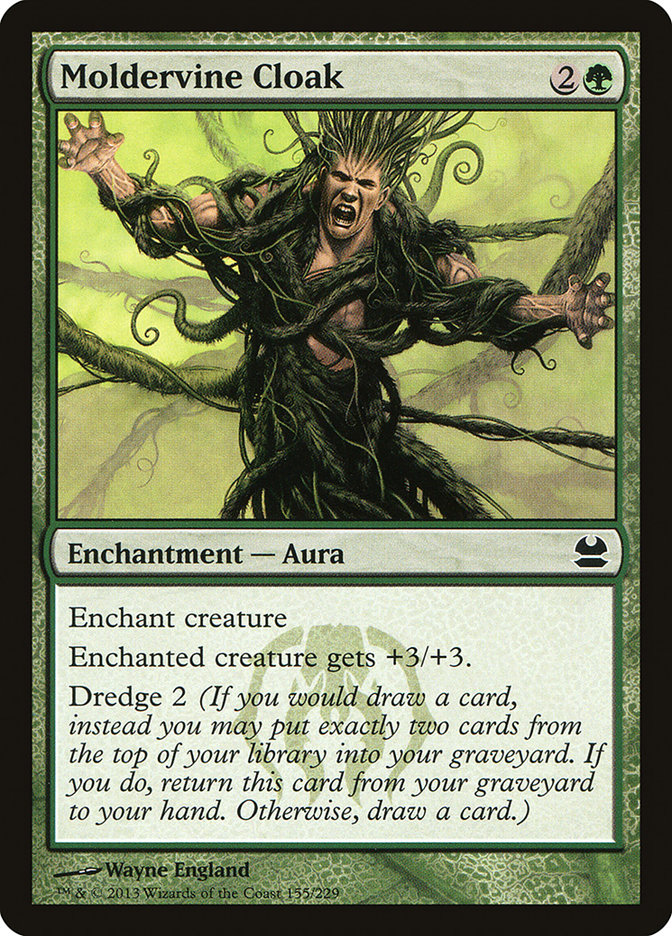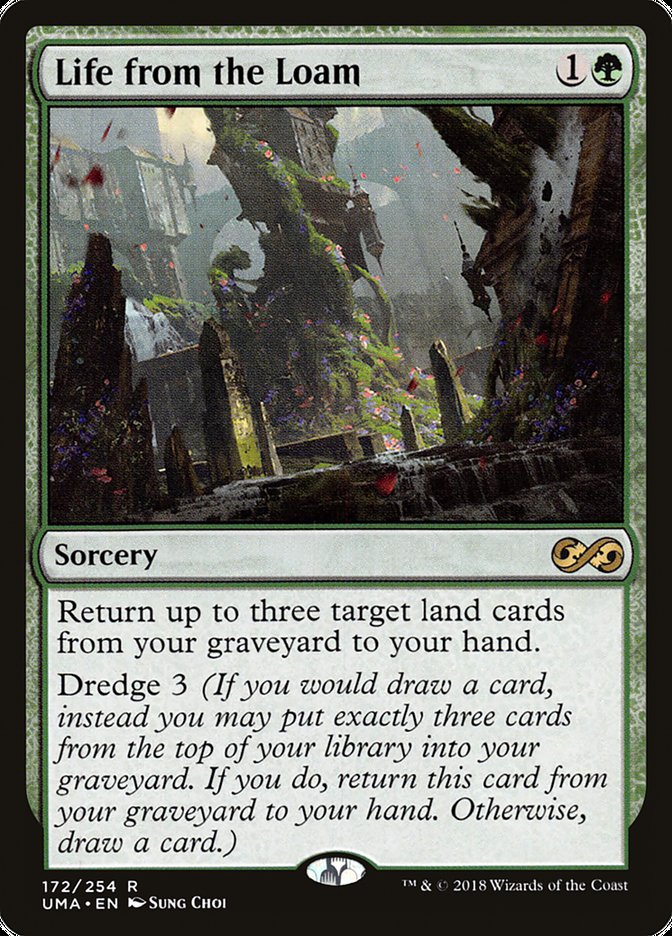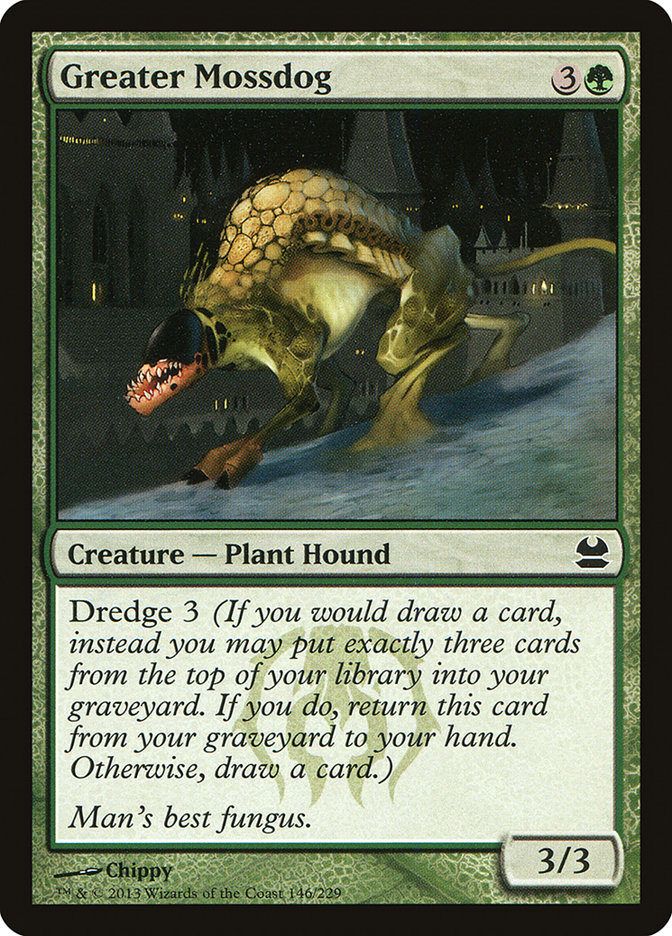Last Saturday I posted the results of a new Theme Week on my patreon, which is a special set of content all centered on, you guessed it, a specific theme. This time the theme was the Guilds of Ravnica from Magic: the Gathering, an often popular choice for people who follow my content creation. After some poll voting last month, my paying patrons settled on wanting to see some cards from the Golgari Swarm, a faction in charge of the agriculture and waste disposal for the infamous city-spanning plane of Ravnica. And as with most Theme Weeks, I eventually settled on a combination of item-spell-monster for the full release:
Golgari Cluestone, Moldervine Cloak, and Greater Mossdog
And as is often the case with Ravnica Theme Weeks, I decided to focus my attention on one of the "signature mechanics" of the Golgari. You see, each time Magic: the Gathering releases new cards centered around Ravnica, they give each of the city's ten guilds a mechanic unique to them, which helps cement the flavor of the cards. Being obsessed with death, life, rot, and rebirth, the Golgari's mechanics always involve returning creatures from the dead or using corpses as resources, which is always fertile ground (sorry) for some equally interesting RPG mechanics.
This time though, I wanted to take a deep-dive into one of the most infamous mechanics to ever appear in the card game: Dredge.
For reference, this isn't even a good card with Dredge. Dredge was both beloved and hated upon release, depending on which side of the table you were sitting on when it appeared. As a mechanic, it was designed to interact with two of Magic: the Gathering's most finicky and difficult-to-balance aspects, card draw and the graveyard. Card draw might be obvious, but if you're unaware, the graveyard is where spells go after they've been played and creatures after they've been killed or destroyed. So how does Dredge work? Well, Dredge gave cards a special property for as long as they were in your graveyard– if you would draw cards, you could instead place a certain number of cards from the top of your library into your graveyard directly, and place the card with Dredge straight into your hand. ...If you do game design, you might see the problem already.
Like most card games, MtG relies on randomly drawing from a card deck to help balance the game. Make it less random, and you create a game where the objective is to simply put the right cards in the right order to win, like competitive solitaire. Dredge circumvents the randomosity of a normal card deck, letting you place and keep key cards in hand, ostensibly at the cost of putting others into your graveyard.This is supposed to be balanced with the risk of accidentally tossing a card you need, or running out of cards to draw (meaning an immediate game loss). But Dredge's bigger issue is that it synergizes with itself; the more you Dredge, the greater the chance that you'll put another Dredge card into the graveyard, and then Dredge some more. Add in other graveyard-based abilities and a special card that lets you return resources from the graveyard, and well, you just have a gameplay engine. Needless to say, Dredge hasn't made any reappearances in the nearly 20 years since, aside from a single, underpowered card in an unrelated color.
This is the card in question. It's still a must-play in lots of deck archetypes.
But while Dredge wasn't a good fit for a card game, how about a tabletop RPG? As it turns out, it works pretty well! With some obvious changes. Libraries and graveyards don't exist in D&D (yet) but the flavor of Dredge is easy to apply to spells and monsters. When looking at the designs of Dredge cards, I knew I wanted to keep the flavor of the mechanic for D&D more than the actual implementation. Dredge is supposed to replicate the idea of bringing something back from the dead over and over, but "over and over" is as dangerous a phrase in D&D as it is in Magic. Instead, I settled for a "bring it back once, maybe" philosophy.
And the award for "Most Pettable Fungus" goes to...!
On each card with Dredge, the mechanic comes with a number attached. That number is how many cards you have to place into the graveyard from your library. It is also conveniently similar to the numbering of the Monstrosity mechanic I already made in D&D for the Theros block (more on that some other time). So whether it's on spells or monsters, Dredge forces you to roll a d8 when the spell or monster in questions "expires" (when you finish casting it, or kill the creature). If you roll equal to or below the Dredge number, one of two things happens. On a spell, you immediately get to duplicate the spell's effects, without needing to expend another spell slot. On a monster, it gets right back up with 1/2 its maximum hit points restored, and continues the fight. Voila! The essence of Dredge is captured, but by limiting either version to a "single use" then I can keep the balance without going overboard. Hopefully.
This mechanic, like everything I make and put on Patreon, is still technically "in beta." I think it's good enough for a wide release, and I've tested it by the numbers, but I haven't had a chance to actually playtest it with a real group yet. There's a chance things might need to be changed or re-balanced, but this feels good, and I think it works well with the flavor and spirit of the Golgari Swarm. And while there might not be many Dredge cards to convert, its a mechanic I would be more than happy to use in some other spell and monster designs in the future. As for when that might happen... well, that's anyone's guess.




No comments:
Post a Comment